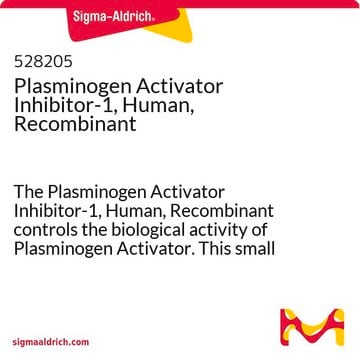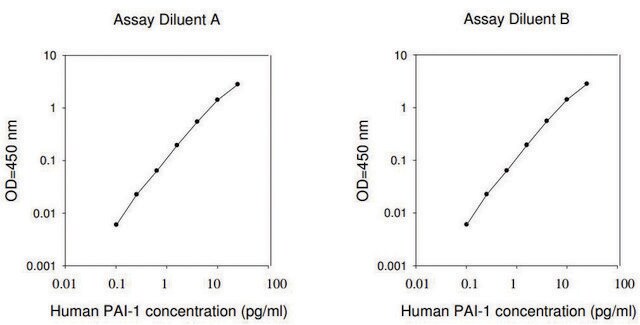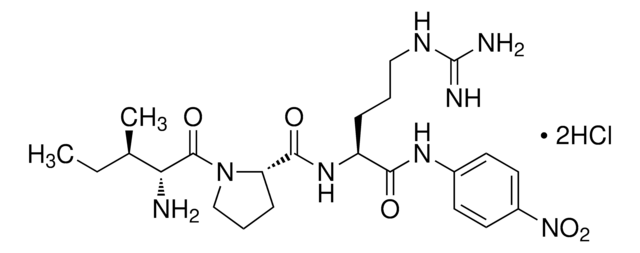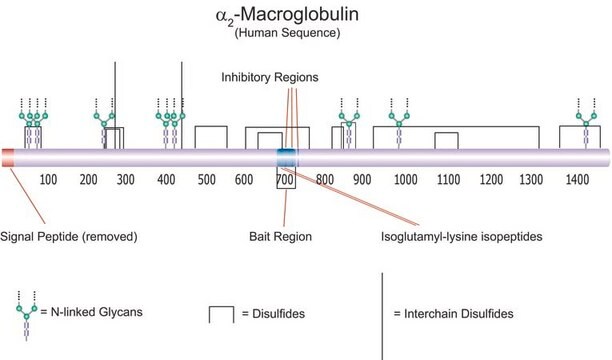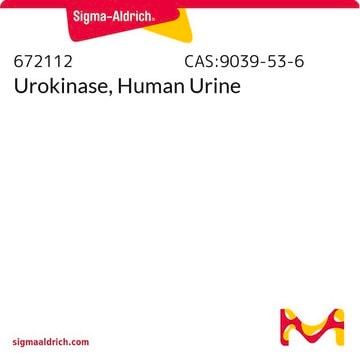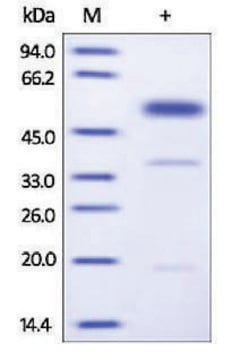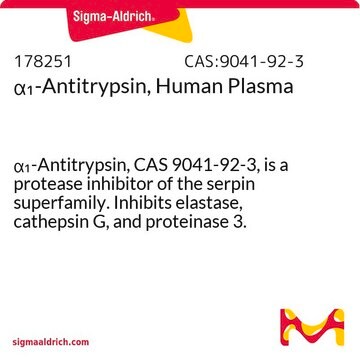A8111
Plasminogen activator inhibitor 1 (PAI-1)
≥200,000 units/mg protein, lyophilized powder, ≥90% (SDS-PAGE)
Synonim(y):
PAIE, PLANH1, Plasminogen activator inhibitor, β-migrating endothelial cell-derived type, Serpin E1 PAI-1, Serpine 1
About This Item
Polecane produkty
product name
Plasminogen activator inhibitor 1 (PAI-1) human, recombinant, expressed in E. coli, ≥90% (SDS-PAGE)
rekombinowane
expressed in E. coli
Poziom jakości
Próba
≥90% (SDS-PAGE)
Postać
lyophilized powder
aktywność właściwa
≥200,000 units/mg protein
masa cząsteczkowa
~43 kDa
rozpuszczalność
water: 0.1 mL, clear, colorless
numer dostępu UniProt
Warunki transportu
dry ice
temp. przechowywania
−20°C
informacje o genach
human ... SERPINE1(5054)
Szukasz podobnych produktów? Odwiedź Przewodnik dotyczący porównywania produktów
Opis ogólny
Zastosowanie
- as an inhibitor of pro-brain-derived neurotrophic factor (proBDNF) in radioimmunoprecipitation assay (RIPA) in peripheral blood and lymphocytes
- to block plasmin activation in mice infected with C. albicans hyphae
- to test its effect on neurite growth in neurons
Działania biochem./fizjol.
Definicja jednostki
Postać fizyczna
Rekonstytucja
Komentarz do analizy
Kod klasy składowania
10 - Combustible liquids
Klasa zagrożenia wodnego (WGK)
WGK 1
Temperatura zapłonu (°F)
Not applicable
Temperatura zapłonu (°C)
Not applicable
Certyfikaty analizy (CoA)
Poszukaj Certyfikaty analizy (CoA), wpisując numer partii/serii produktów. Numery serii i partii można znaleźć na etykiecie produktu po słowach „seria” lub „partia”.
Masz już ten produkt?
Dokumenty związane z niedawno zakupionymi produktami zostały zamieszczone w Bibliotece dokumentów.
Klienci oglądali również te produkty
Produkty
Lipid Induced Insulin Resistance
Nasz zespół naukowców ma doświadczenie we wszystkich obszarach badań, w tym w naukach przyrodniczych, materiałoznawstwie, syntezie chemicznej, chromatografii, analityce i wielu innych dziedzinach.
Skontaktuj się z zespołem ds. pomocy technicznej


